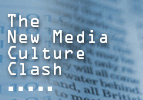



Attempts to compose in new media elicit questions of whether the nature of argument has changed. Whereas the typical journal article or final paper follows a rigidly linear progression, new media technologies allow for non-linear argument and organizational strategies. Short of scripting linear paths through an online document, how can the writer be assured that the reader encounters a complete argument? In the case of the graduate student, how can she or he be assured that an instructor has seen the full scope of the argument presented (particularly troubling for students since, invariably, a grade is involved)?
For graduate students and scholars considering potential publication, new media composition also raises questions about format, length and navigation. While it may be comfortable to assume that a 15- to 20-page paper will be of suitable length for publication, how does one determine an equivalent length when considering individual web-based lexia, images or video content? This lack of certainty also breeds concerns regarding how new media projects will be evaluated. Will content be prized over form? Should the challenges associated with composing new media be taken in to account?
These questions cut to the heart of the current academic culture; in particular, the structured expectations regarding culminating coursework within the Old Dominion University English doctoral program.
Claudia Strauss argues in her 2005 article “Analyzing Discourse for Cultural Complexity”:
There are at least three different ways in which ideologies and cultural understandings have power over thought and expression…. First, ideas can become powerful by being so deeply internalized that people are hardly aware they hold these beliefs and do not consider any alternatives. This is the nature of the shared, taken-for-granted assumptions that are the core of what is meant by “culture” (203).The current print-centric stance within the ODU English doctoral program (as evidenced by the assignment practices shared on course syllabi) appears to be just such a culture.
Developing genre & reluctant culture • Personal Semantic Networks • Interview findings • Works cited • Home